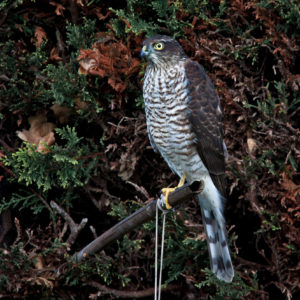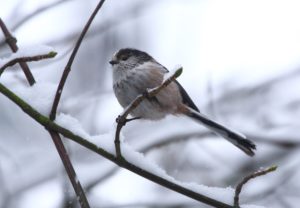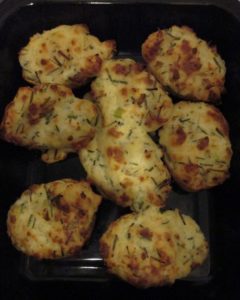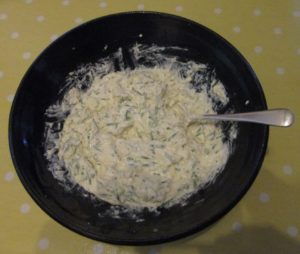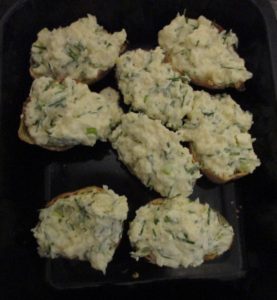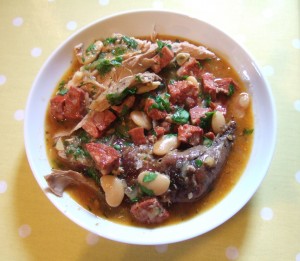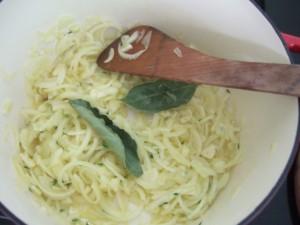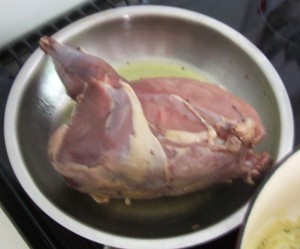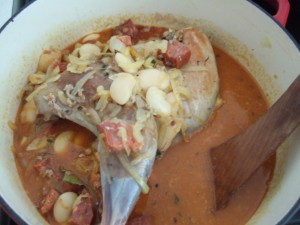Yesterday we took part in the RSPB Big Garden Birdwatch, an annual survey of wild birds seen in the gardens and public spaces of the UK, which gives a snapshot of the health of our native bird population. Last year’s survey recorded some 8 million birds, with around half a million people taking part.
During my stint I had the most amazing encounter. The garden was busy with all sorts of birds, including blackbirds (Turdus merula) and goldfinches (Carduelis carduelis) and long-tailed tits (Aegithalos caudatus), feeding on the sunflower seeds and fat balls and mealworms we had put out around the garden. Suddenly most of the birds flew off, and a sparrowhawk (Accipiter nisus) pitched up right below where I was watching from an upstairs window, perched on the fence panel. We occasionally see a sparrowhawk flying overhead, but rarely have such a good close-up view.
It was looking into our large Mahonia japonica bush by the fence, in which several small birds were sheltering. The mahonia is a dense and prickly bush, so as long as the birds stayed in there, there was no chance of the sparrowhawk getting at them. It spent a few minutes peering in to the bush, then flew sharply round to the other side, pitching up on the fence panel again, and then completed the circle by flying back to its original spot. After a little while it scythed off to land on our shed roof at the bottom of the garden, partially hidden by a large Garrya elliptica ‘James Roof’ bush. At this point several small birds flew sharpish out of the mahonia in the opposite direction. I was watching the sparrowhawk so only saw them out of the corner of my eye, so didn’t identify them positively, but I think they were likely long-tailed tits, which seem to use the mahonia as a shelter from which to nip out to grab mealworms.
Just the other week there was a lovely programme on the box, Hugh’s Wild West, in which Hugh Fearnley-Whittingstall learned about the life of long-tailed tits, how they huddle in a group on a branch to roost at night, and lay their eggs in a downy nest made of moss and feathers and cobwebs. They are such delightful little birds, and it was so interesting to learn more about them. The episode is available on the BBC iPlayer for a few weeks here.
